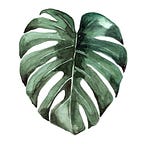Monstera “Borsigiana” vs. “Deliciosa” What is differencece?
it was brought to my attention that people are concerned about whether they have a “true” deliciosa or a slightly different plant called “Borsigiana”. Here’s what I found after looking closely at my own plant:
⠀⠀⠀⠀⠀⠀⠀⠀
The alleged tell-tale sign of a true deliciosa is ruffles at the stem where it meets the leaf. I noticed 100% ruffling on all of the leaves with both cuts and holes. Some of the oldest leaves, however, which had few cuts, lacked the stem ruffling. I traced along the same vine to find that the newest leaves, the bigger ones with both cuts and holes, also had ruffles — so it wasn’t that there was a mixture of plant types in my pot
⠀⠀⠀⠀⠀⠀⠀
The true deliciosa leaves are “very big” compared to the borsigiana — while, it’s tempting to look at your own plant and think “well since my leaves aren’t super huge…” you should remember that leaf size is highly dependent on your growing conditions and the age of the vine. Other than adequate light and watering, Monstera leaves will reach their full potential if the vine is affixed to something that allows it to grow upwards — it doesn’t even have to root into a surface like onto a tree, the vine only needs to be in a vertical orientation. My own plant is just tied to a trellis.
So by the presence of ruffling at the stems, I would conclude that my plant is a true #monsteradeliciosa. But for those who have a young plant fresh from the nursery, the absence of stem ruffles isn’t enough to conclude that you don’t have the true deliciosa. You’d need to wait until the plant grows to reveal its bigger leaves to see if those lack ruffles on their stems.
Side note: I couldn’t find an answer on whether the “borsigiana” is a cultivar of deliciosa, which should therefore be written: Monstera deliciosa var. ‘borsigiana’, or a species within the Monstera genus — written: Monstera borsigiana. Because plants are so easily cross-pollinated and cultivated, it makes classification difficult.⠀
Final note: instead of being disappointed that you don’t have a “true” deliciosa based on potentially inconclusive evidence, focus on helping whatever plant you have grown to its full potential!
